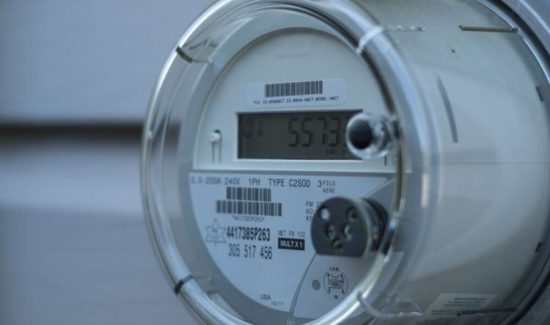Cleaning Up the Chesapeake Bay
There has been a lot of talk about how Pennsylvania can clean up its share of the Chesapeake Bay watershed.
But it sure sounds like the same old rhetoric from existing stakeholders — the same people who over decades have spent billions of tax dollars on failed ideas at the expense of hard working families and small businesses.
In the process, its failure is jeopardizing local drinking water sources.
The challenge is to address manure runoff from Pennsylvania’s large livestock population. Nitrogen from manure is the biggest problem because it’s partially an airborne pollution that settles in our waterways and works its way to the Bay. That means long-accepted solutions like riparian buffers can only do part of the job.
How much progress has Pennsylvania made since the federal government put into place Chesapeake Bay cleanup mandates in 2010?
Will Trump’s EPA let Pa. off the hook for Chesapeake Bay cleanup?
Will Trump’s EPA let Pa. off the hook for Chesapeake Bay cleanup?
Pennsylvania has 19,000 miles of impaired waterways. Many of them drain into the Susquehanna River, which in turn empties into the Chesapeake Bay.
Well, in six years, Pennsylvania residents, farmers and businesses have been required to spend billions on local and state cleanup plans. In that time, nitrogen levels have only been reduced by 6 percent.
Billions of dollars. Six percent. It sounds even worse when you consider that Pennsylvania is responsible for 69 percent of the remaining cleanup.
The results of this epic failure should concern everyone because it concerns more than cleaning up the Bay. It’s a public health issue because the impact on drinking water is stunning. Bay cleanup is the canary in the coalmine. Local drinking water pollution is the issue.
Think about this: 150 facilities in Lancaster County must treat for nitrogen to meet drinking water standards – that’s more than half of the 293 public drinking water sources in Pennsylvania that require treatment. And the problem exists in other counties. York (16), Lebanon (14), Franklin (12), Adams (6), Dauphin (3), Cumberland (3) also have facilities that must treat its water for nitrogen so it’s consumable.
Yet, planning to address one of the largest environmental challenges of our time continues to revolve around taxpayer- and ratepayer-funded solutions that only provide minimal impact as the stress on our drinking water – and the Bay – continues.
In a tight budget year, Gov. Wolf rightfully makes Chesapeake Bay clean-up a Pa. priority: Editorial
The York County Democrat wants to make sure Pa. lives up to its commitments. That’s the right call.
Local wastewater treatment plants have spent billions to improve their facilities to handle cleanup, and more local authorities are being pushed to do the same. Such plants aren’t cost effective and do not address airborne nitrogen from upstream animal agriculture facilities.
In all, stormwater authorities still need to reduce 3.5 million pounds of nitrogen at a projected cost in excess of $6 billion. Hampden Township in Cumberland County and Lower Paxton Township in Dauphin County have identified Chesapeake Bay cleanup as a budget issue.
Hampden has begun assessing a stormwater management fee on all properties.
The state also has spent hundreds of millions installing tens of thousands of acres of forested riparian buffers.
Buffers help stop solid manure from running off into local streams and rivers, but they don’t capture airborne nitrogen.
It’s only going to get worse. Cost estimates to meet the mandate are now in the tens of billions of dollars.
This is what taxpayers need to understand: You’re going to pay for it. In fact, you’ve been paying for it.
Who do you think has paid for the billions in upgrades at local treatment plants for costs related to bonds, construction, engineering and legal fees? Who do you think has paid hundreds of millions of dollars for buffers that only do part of the job?
Fortunately, there’s hope. The Wolf administration and some legislators in the Pennsylvania General Assembly are beginning to consider private-sector alternatives.
Companies across America have built technology that can be used by farmers to treat airborne nitrogen.
Farmers can then sell nitrogen credits through a competitive bidding program to municipalities at a much lower cost to help them meet the Chesapeake Bay mandate, literally saving taxpayers, farmers and businesses billions.
We know this solution will save money because a 2013 study by the nonpartisan Pennsylvania Legislative Budget and Finance Committee (LBFC) concluded that Bay mandate costs could be reduced by as much as 80 percent if Pennsylvania approves legislation to put a competitive bidding structure in place.
The recent Watershed Improvement Plan meeting of regulators, environmental groups and stakeholders made no mention of competitive bidding. This should concern every Pennsylvania taxpayer, farm and business in the Chesapeake Bay Watershed.
Pennsylvania can take action to avoid hitting residents and businesses with billions in additional costs by mandating stormwater authorities use competitive bidding for nitrogen reduction. Not only would there be a reduced cost, but the mandate could be met ahead of schedule.
But if the status quo remains, those savings – and the federal cleanup mandate – will never be realized.
There’s an important additional benefit. The program could be structured to value local environmental benefits, referred to as Green Infrastructure, that do not impact the Bay but will significantly reduce nitrogen impacts to local fresh water sources. These benefits are a by-product of generating Bay credits and would be available at zero additional cost.
That means, for Pennsylvanians who want Growing Greener III, they can receive many of the benefits of Growing Greener III without going to taxpayers with their hand out.
The math overwhelmingly supports the need for Pennsylvania to enable private-sector technologies and competitive bidding. Unfortunately, the existing stakeholder pool is committed to maintain the status quo.
This is what the status quo has created: Communities throughout south central Pennsylvania must treat their drinking water because it has too much nitrogen. Those same communities are spending precious tax dollars on Bay cleanup efforts with little affect.
Pennsylvania cannot continue to ignore the LBFC report because both the environmental and economic costs of the status quo are unacceptable.
Dominic Bassani is a member of the policy committee of the Coalition for Affordable Bay Solutions.





